Physics > Lab Report > Experiment 14 Standing Waves (All)
Experiment 14 Standing Waves
Document Content and Description Below
Report for Experiment #14 Standing Waves Meghan Lumnah TA: Ryan McCarthy December 1, 2020 Abstract In Investigation 1, an apparatus was set up with one end of a string clasped to a stand, while ... the other end of the string was placed over a pully holding a bucket. The tension in the string was adjusted by added weights to the bucket, creating standard waves with a varying number of nodes. The distance between the nodes were measured and the average distance was used to calculate the wavelength of each standing wave. The weight necessary for the wave was recorded and used to calculate the tension in the string. Finally, the wave velocity squared was found and plotted against the tension. The inverse of the slope of this plot would equal the mass per unit length of 0.323 g/m. In Investigation 2, a plastic column filled with water had the level of water adjusted to create varying lengths of the air column. Using 3 different tuning forks of different frequencies, an excitation of the air column was produced. The length of the air column was recorded where the sound intensity was a maximum. Using those measurements, the wavelength of the standing wave within the air column was determined. The wavelength was then plotted against the period of the wave to find the wave velocity known to be the velocity of sounds. The velocity of sound came out to be 359.99 ± 4.94 m/s which does not fall within the true speed of sound in air of 343 m/s. IntroductionWaves are a way of transporting energy from one place to another. A wave consists of successive peaks and valleys that travel in a certain direction. A transverse wave occurs when the motion of the peaks and valleys is “transverse” to the direction of wave propagation. Examples of this could be waves in the ocean or along a string. A longitudinal wave occurs where there are small regions of higher pressure next to regions of lower pressure traveling in a certain direction. Near the pressure peaks, the individual air molecules move towards each other, thus building up the pressure in that region. Near pressure valleys, the individual molecules move away from one another. This back-and-forth motion is in the direction of the wave motion which is what identifies it as a longitudinal wave. This type of wave is evident in sounds waves. When a transverse wave has moved a distance Δ x after the time Δt , the speed of the wave motion along the string is given by: v= Δ x Δt The wave is also characterized by its amplitude A and wavelength λ . The wavelength is characterized as the distance between two peaks. The amplitude is characterized as the distance measured from the point of equilibrium to the peak or the valley of the wave. The time during which the peak moves a distance equal to one wavelength is called the period, T. The period is the time required to make one oscillation (up, down, and back up) of a point on a string. The inverse of this, the number of complete oscillations of a point in one second, is called the frequency, f. The speed of the wave can then be defined by: [Show More]
Last updated: 1 year ago
Preview 1 out of 13 pages
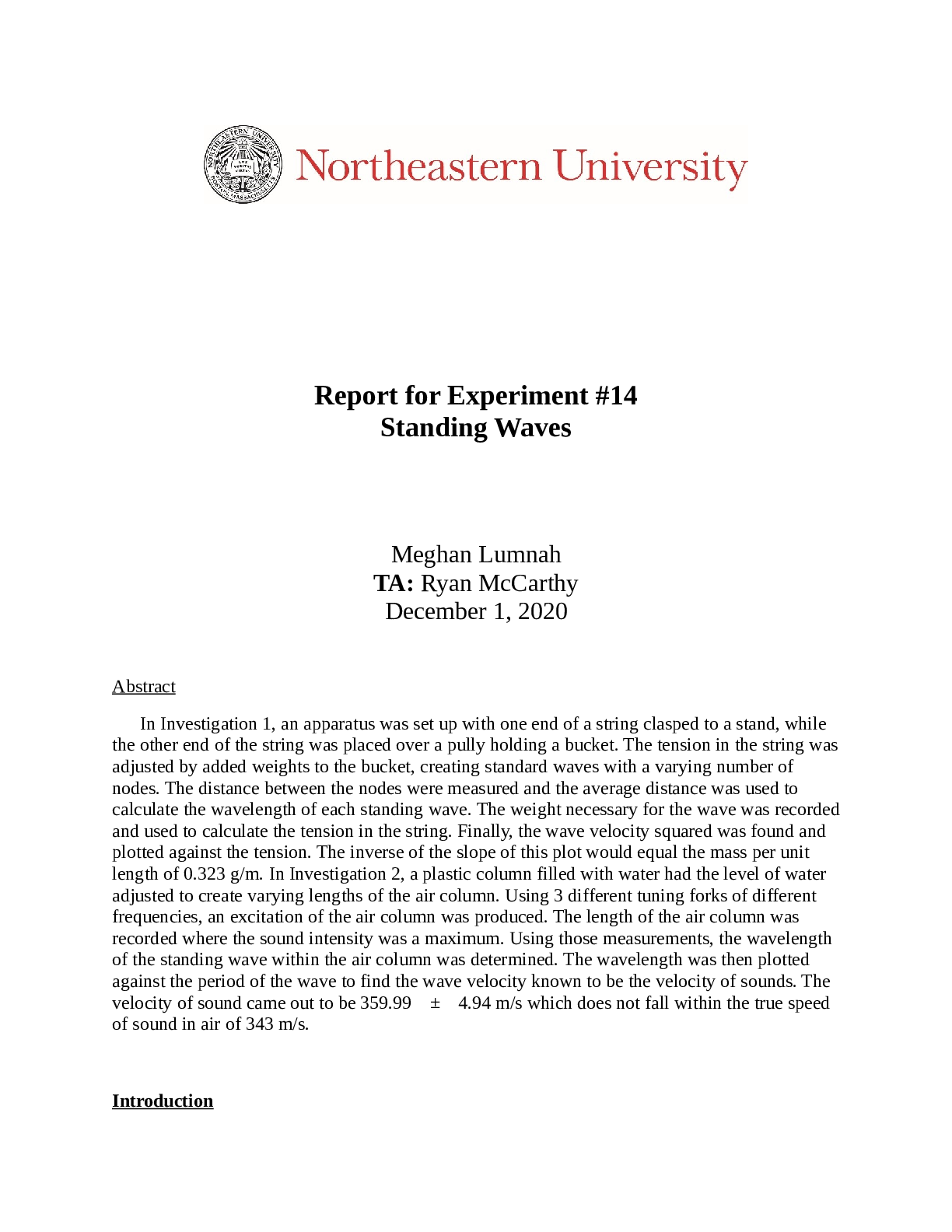
Reviews( 0 )
Document information
Connected school, study & course
About the document
Uploaded On
May 24, 2021
Number of pages
13
Written in
Additional information
This document has been written for:
Uploaded
May 24, 2021
Downloads
0
Views
73




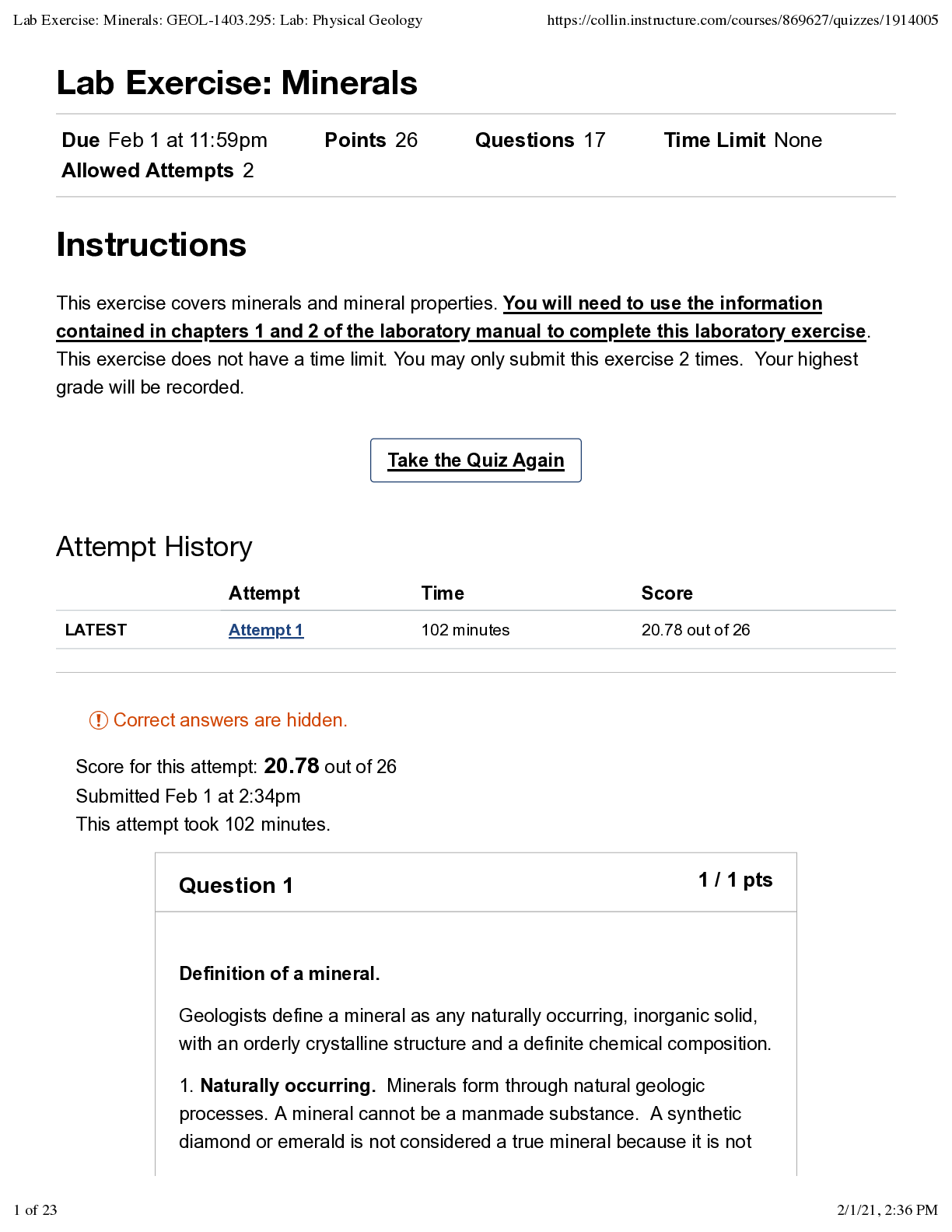


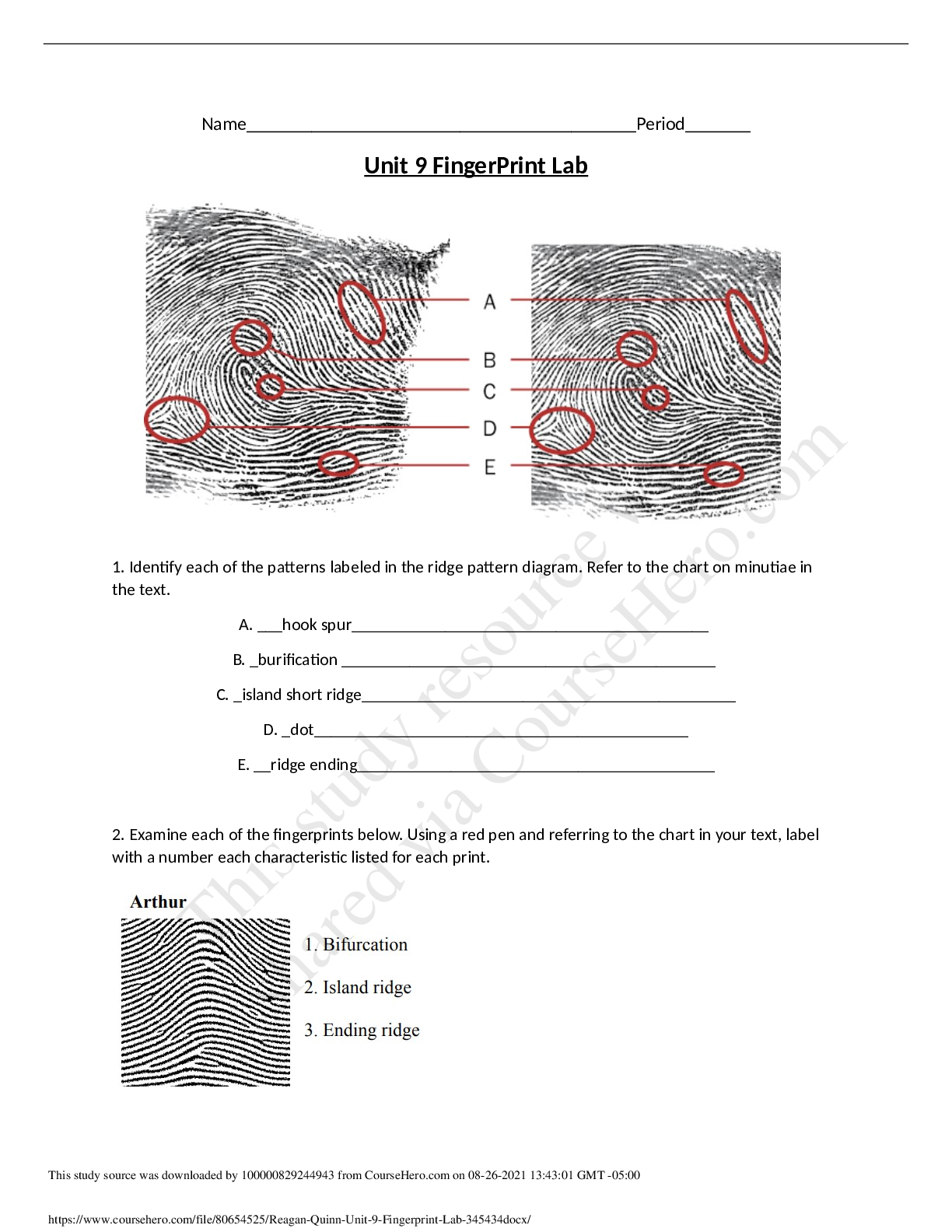
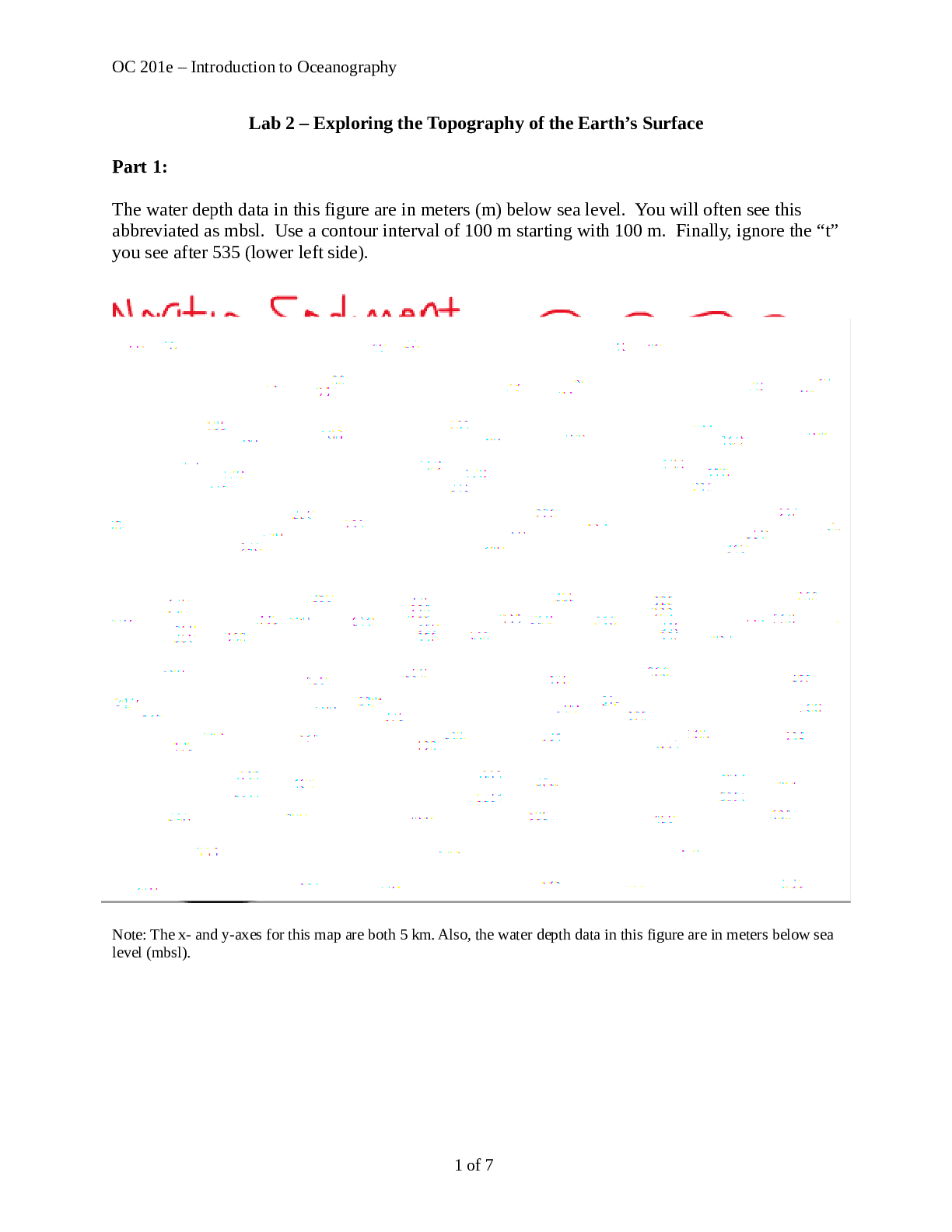



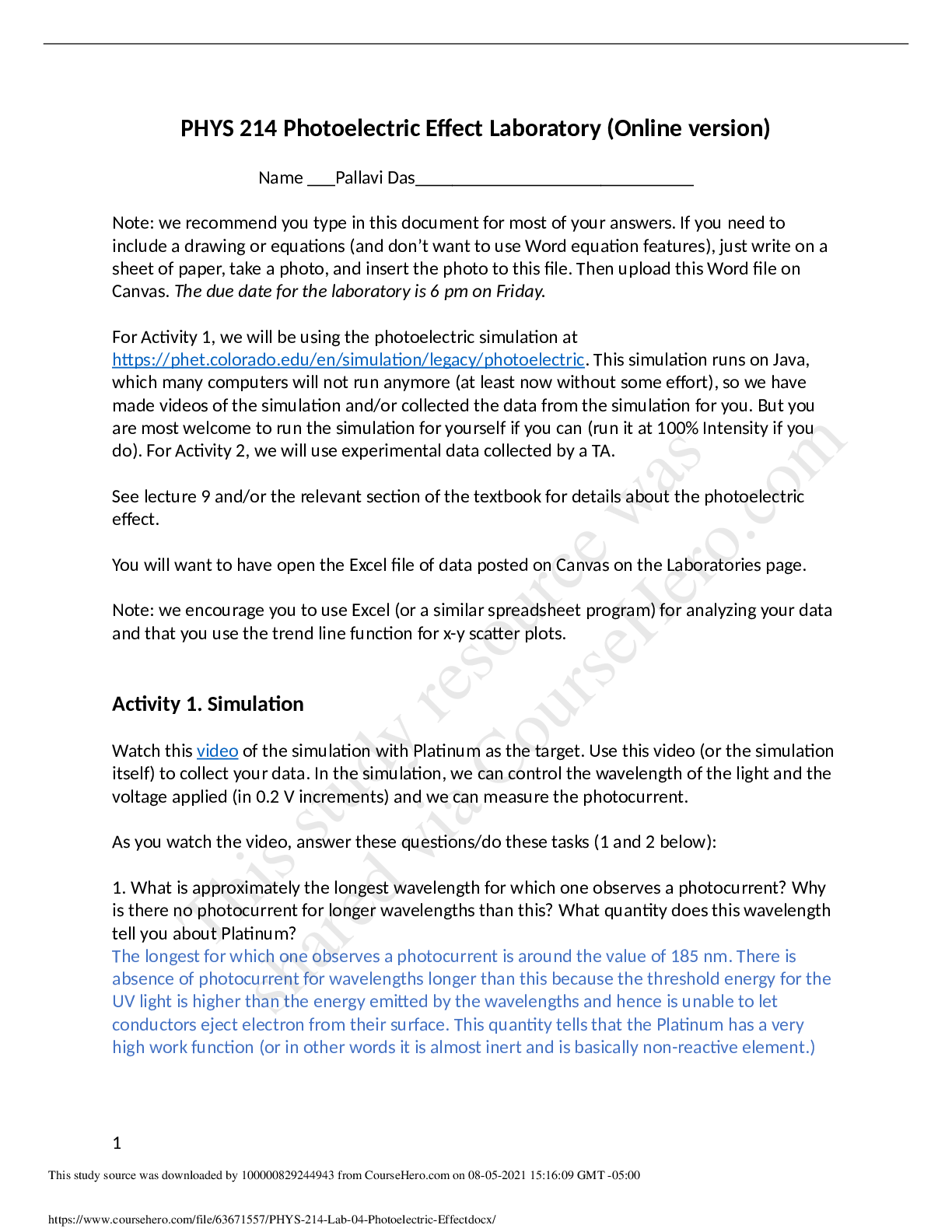

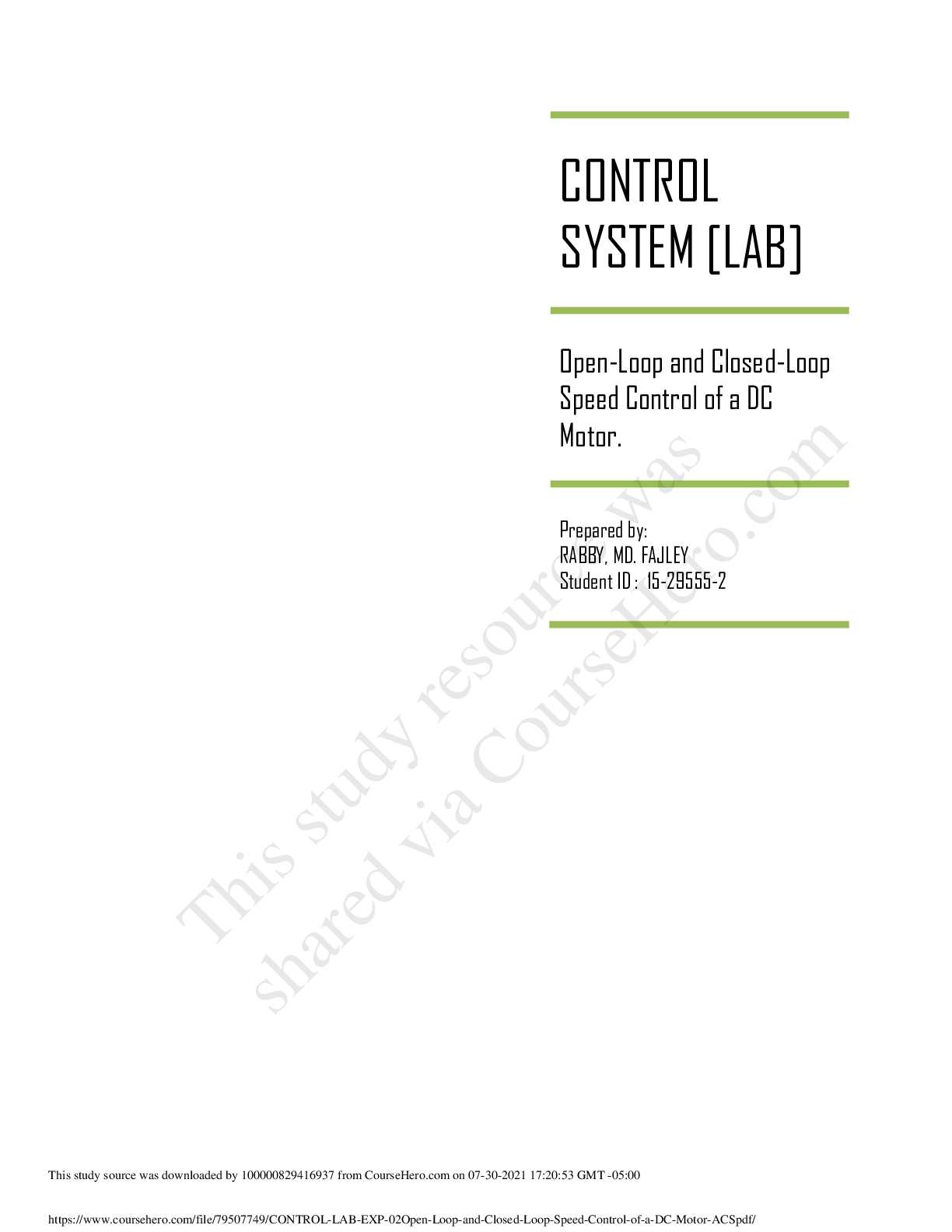



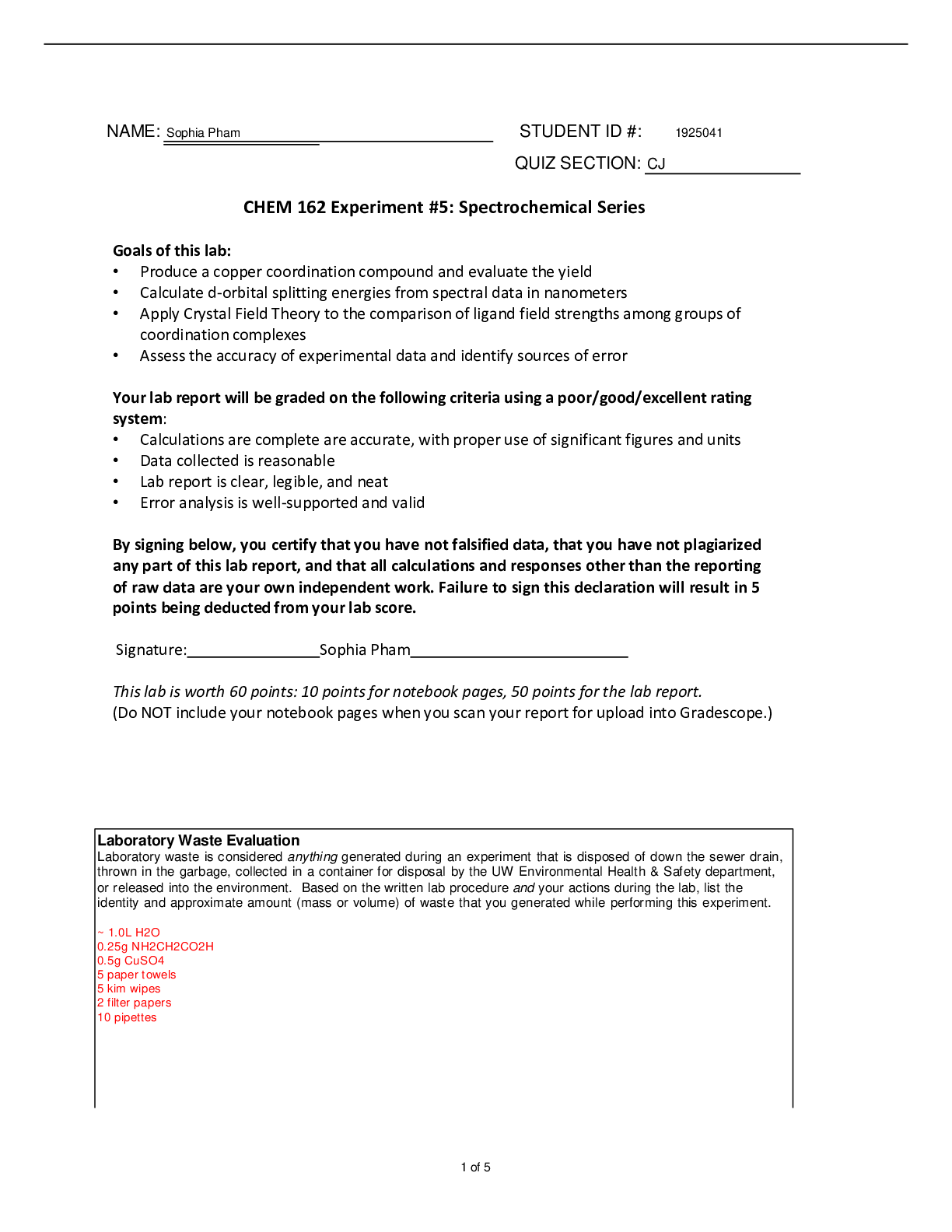
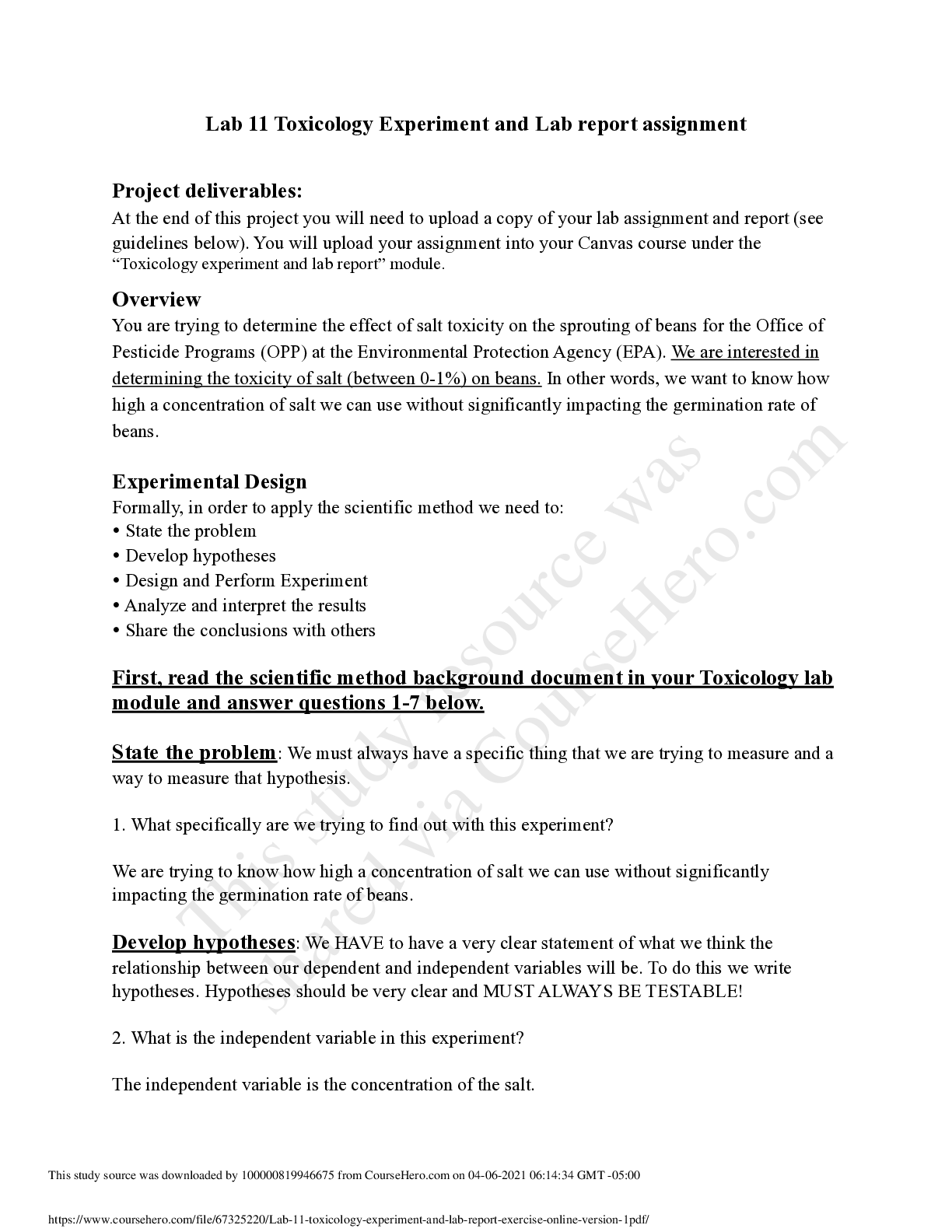
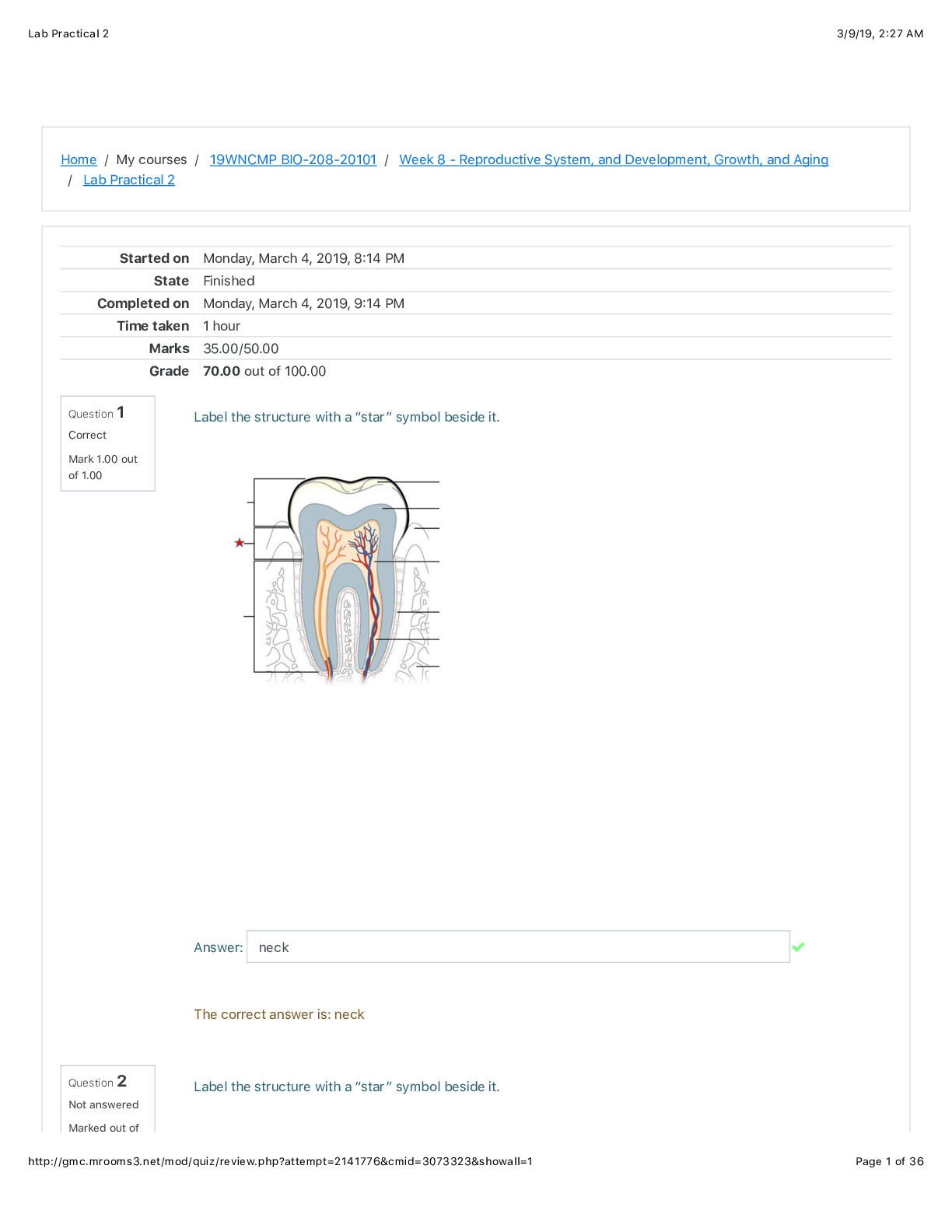
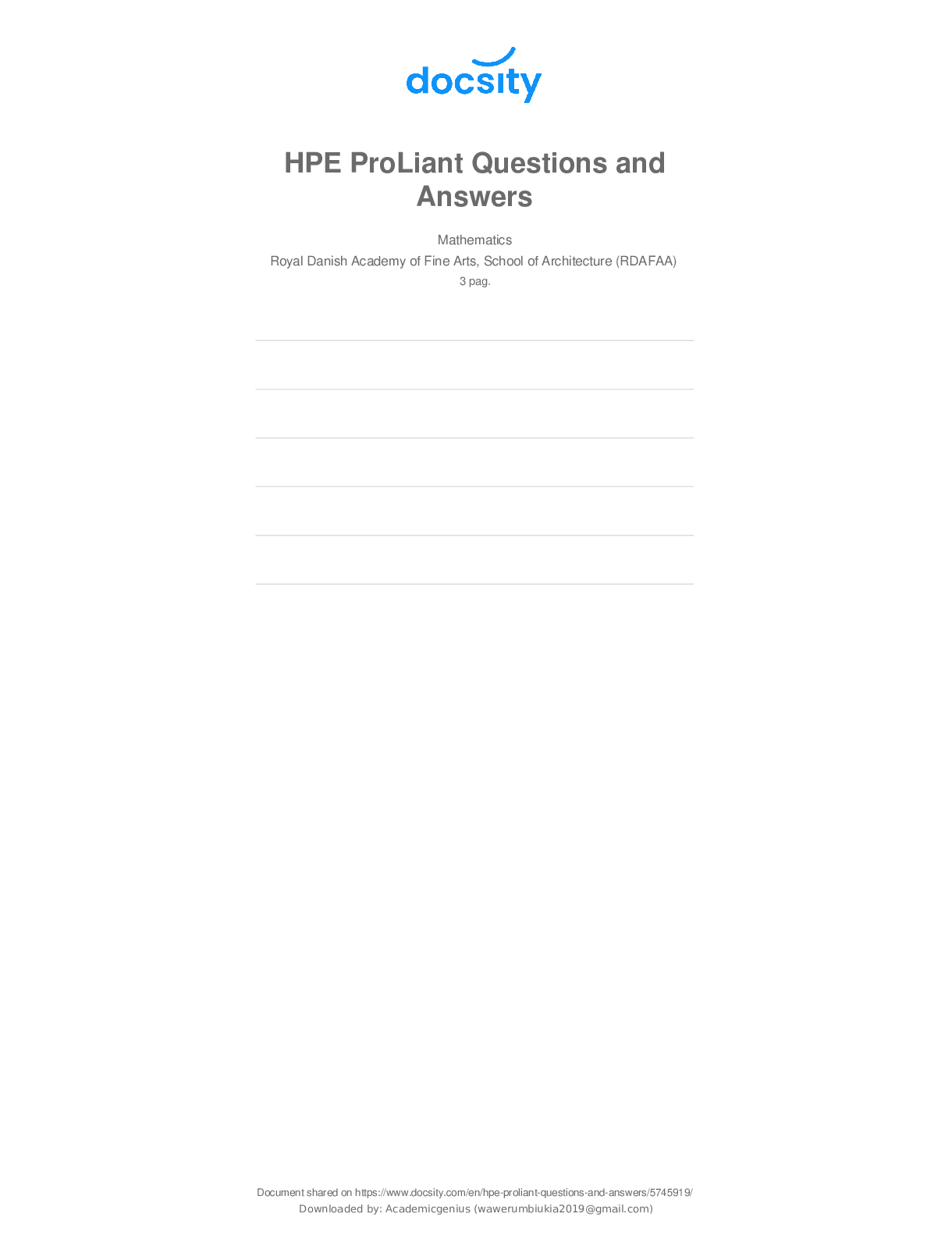
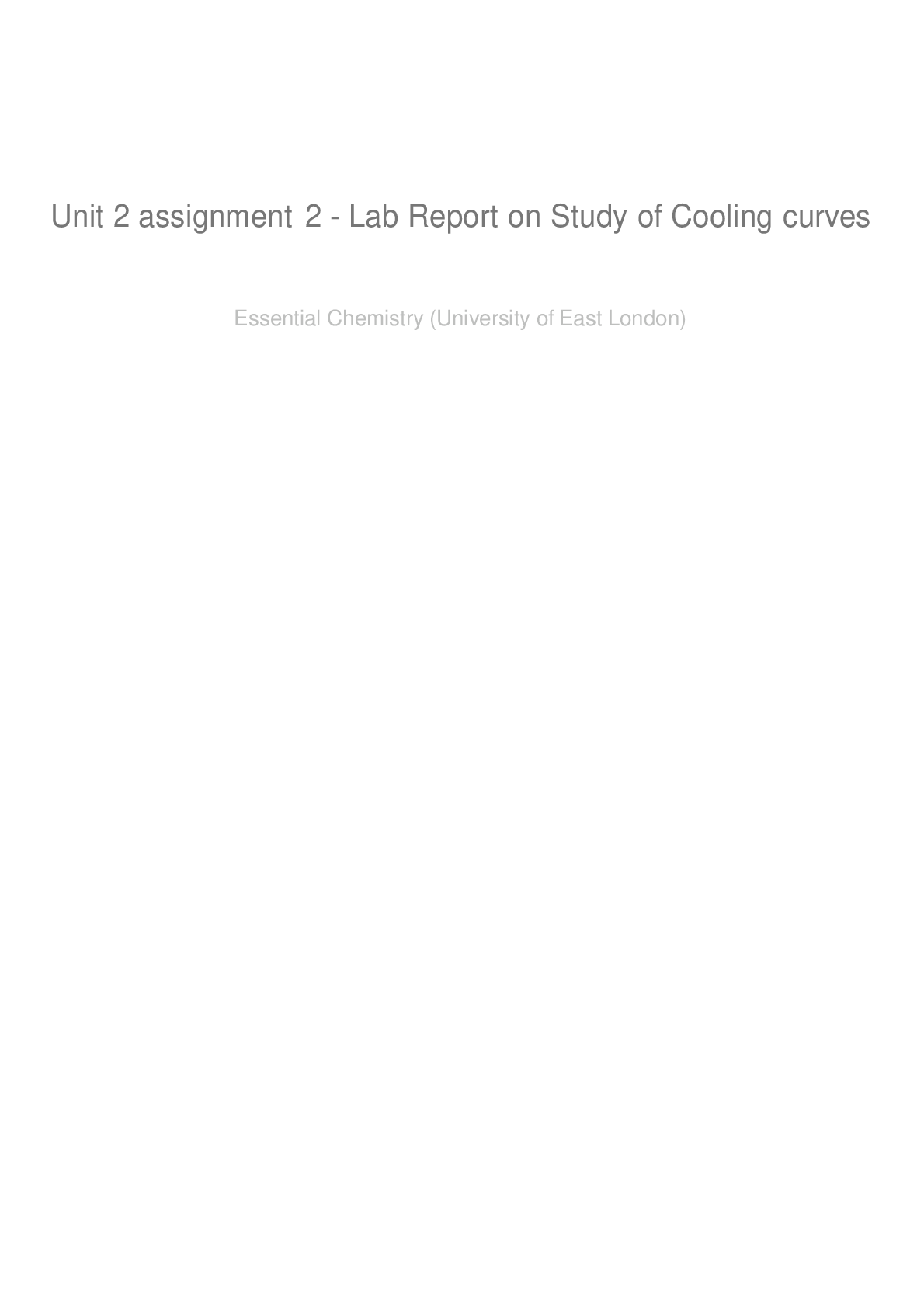
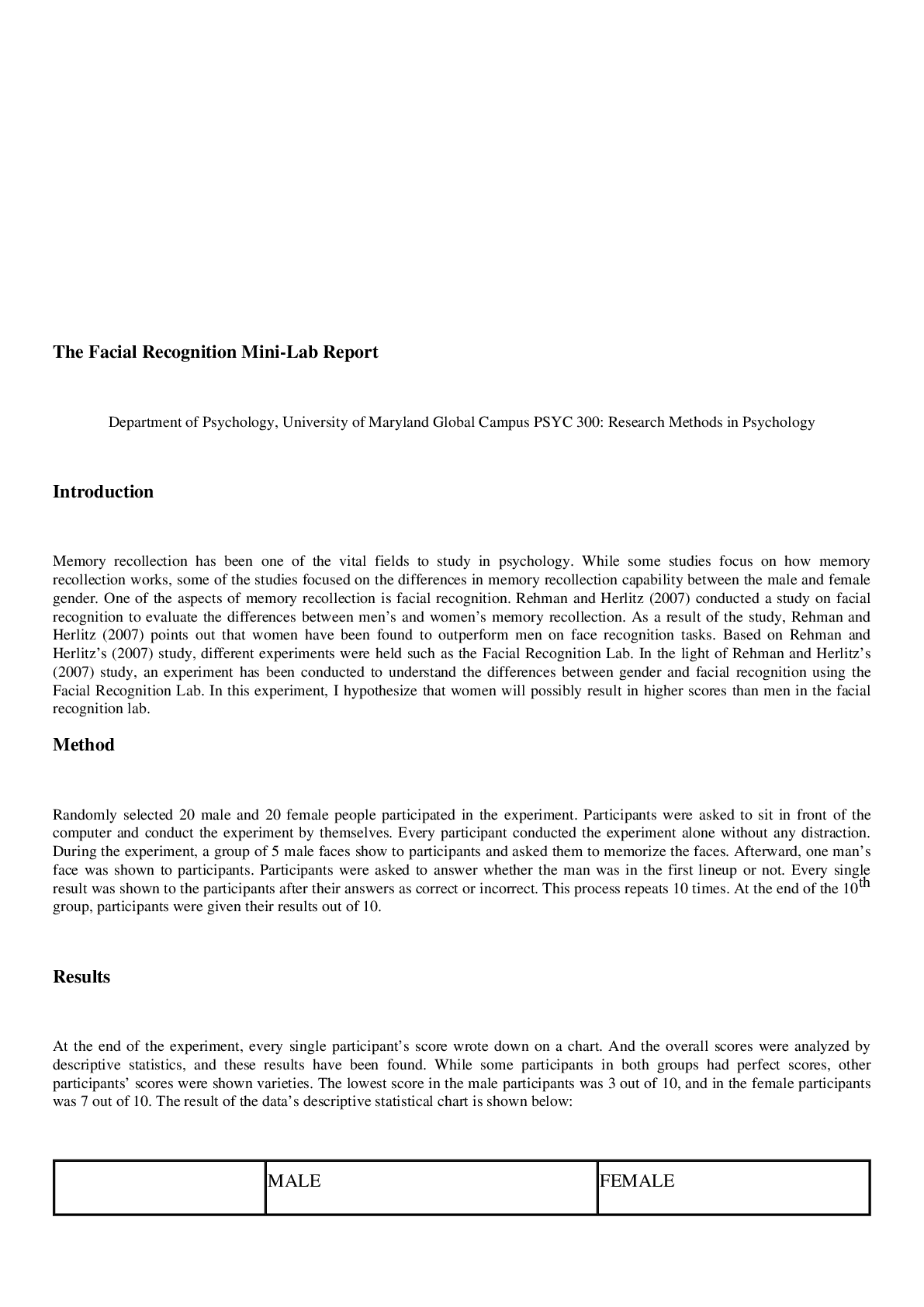
 (1).png)
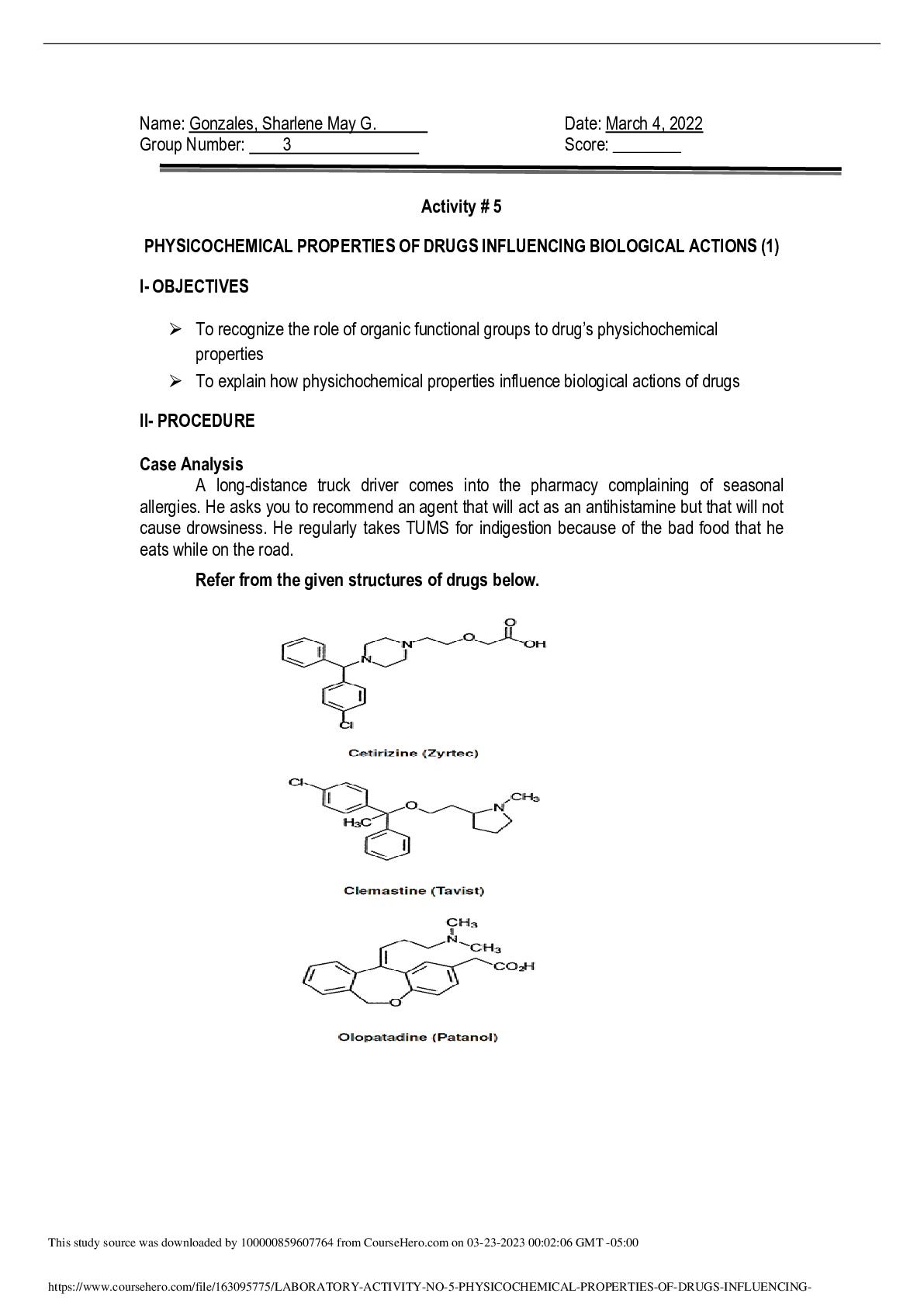
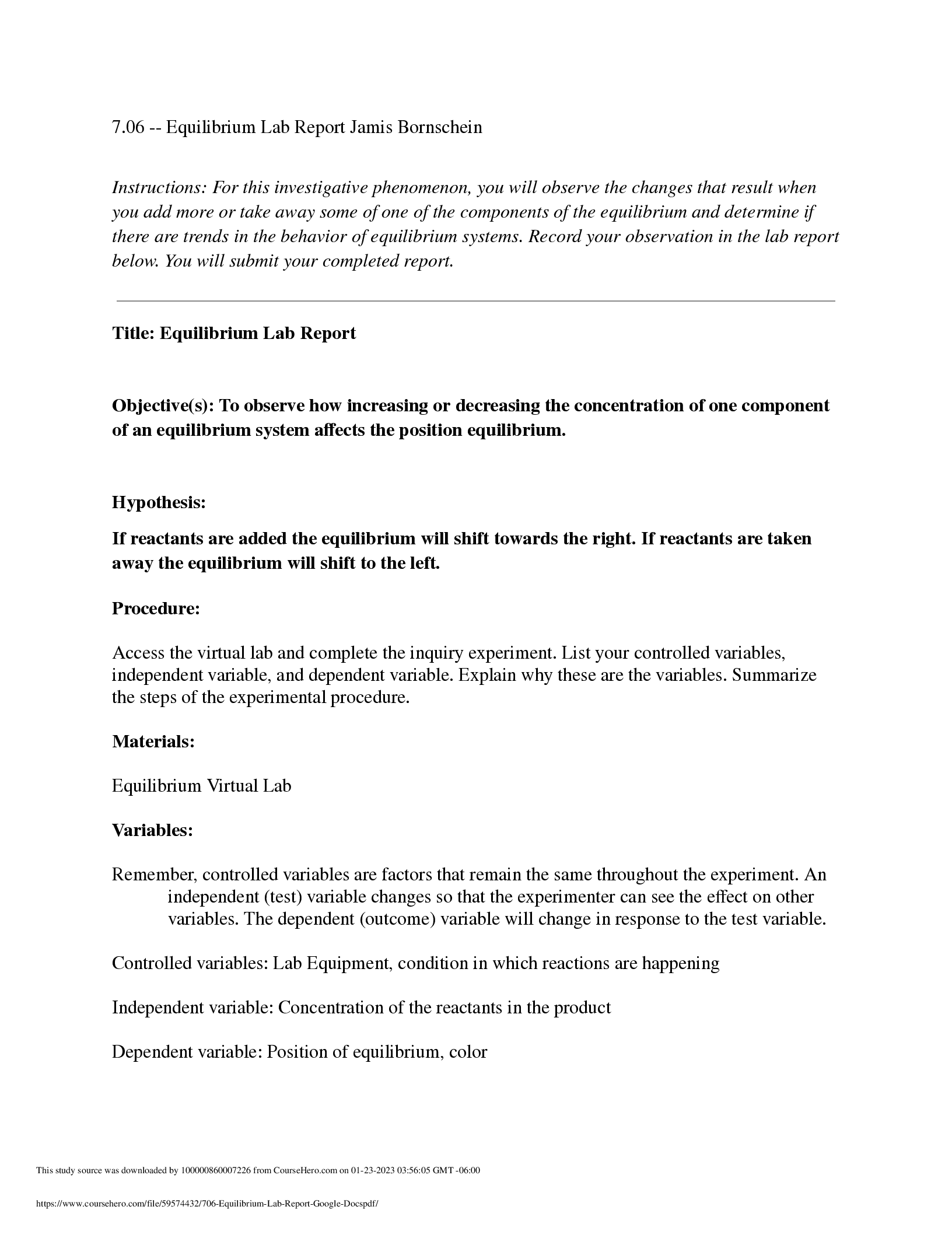
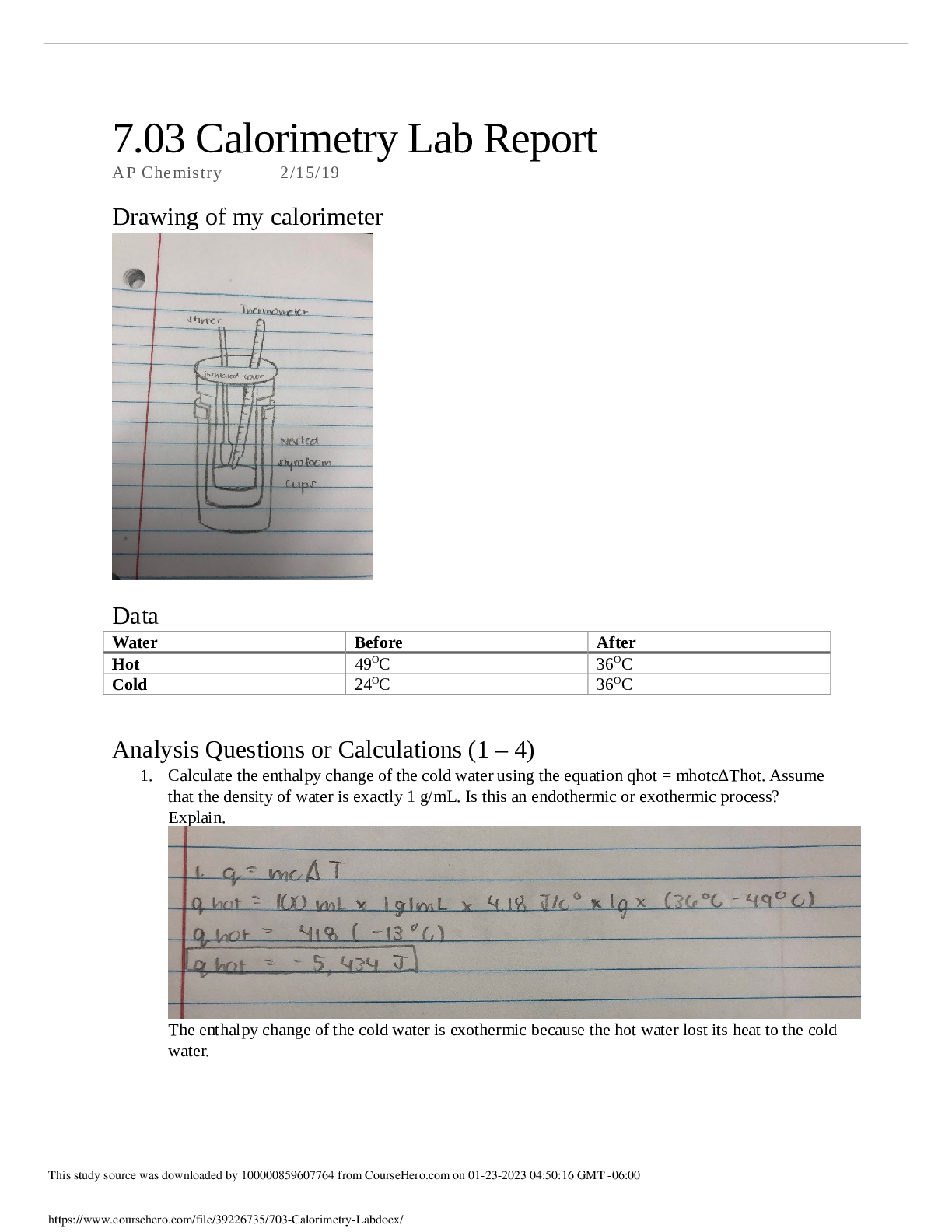



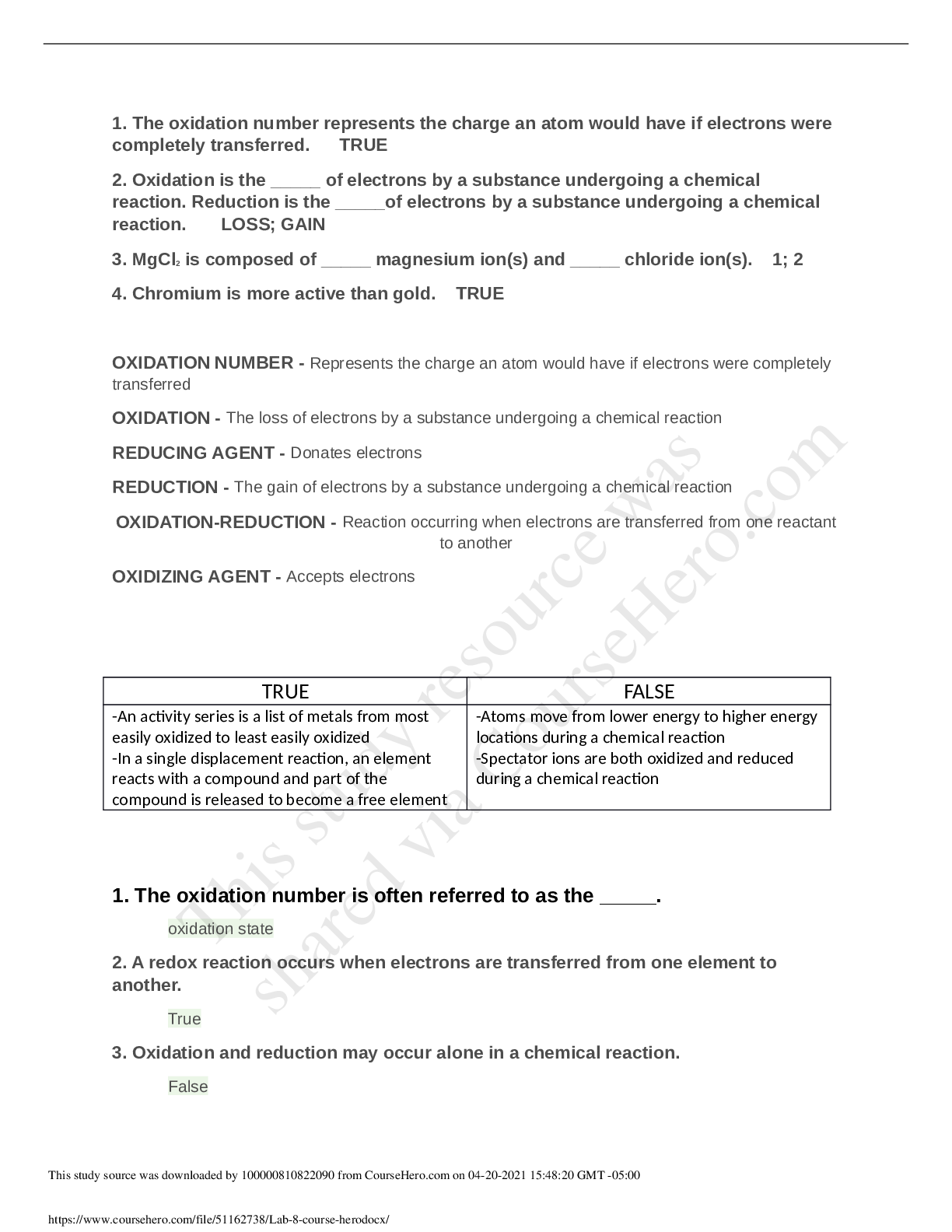

.png)
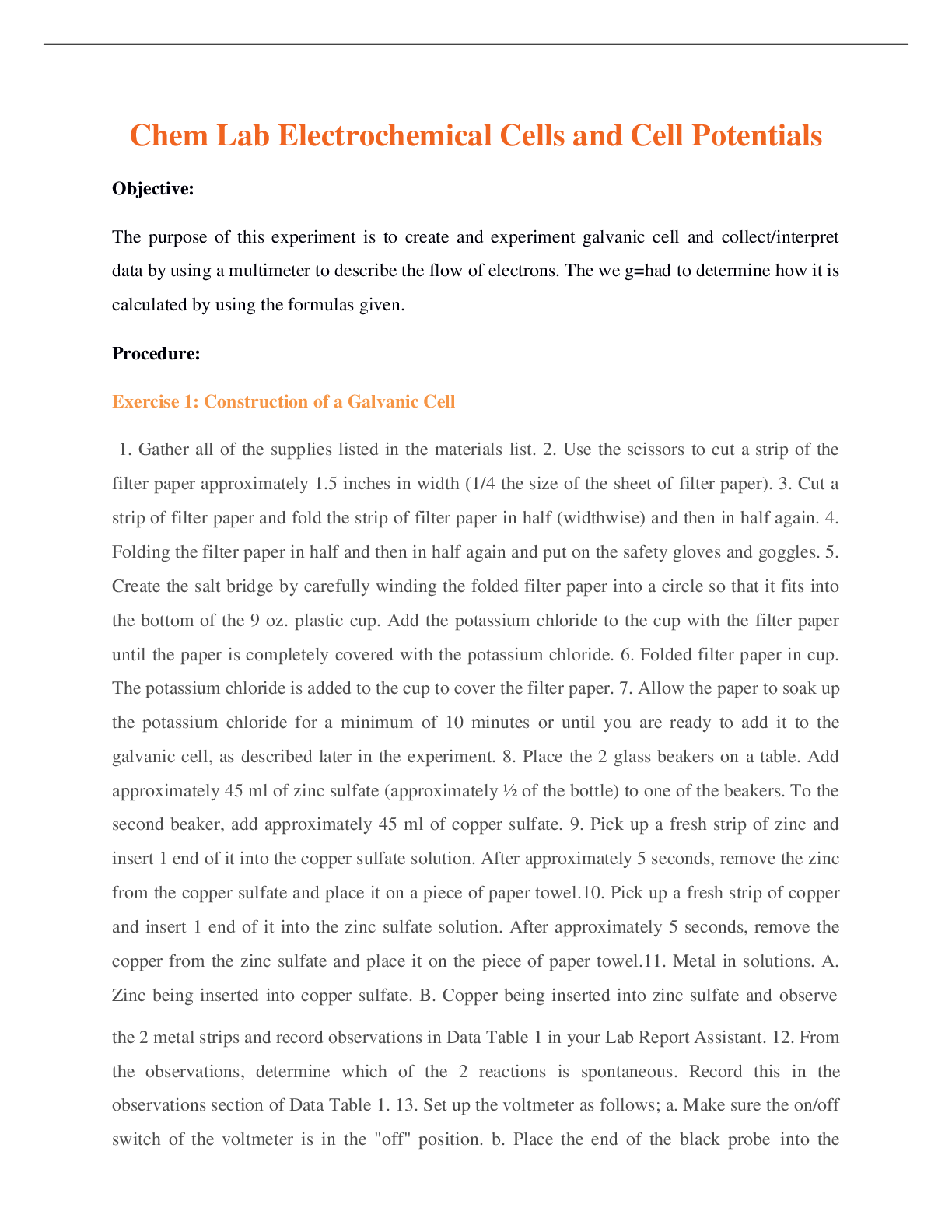
.png)

